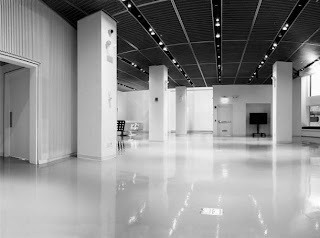Business Marketing on the Internet
Already selling it's products in 163 countries Red Bull has a huge global market in which they can advertise thier product. But what sepetates the company from other is that,Since its inception Red Bull has shunned print advertising in its marketing strategy. It has not created one Web-marketing campaign. And it hasn't tweaked or expanded its product line one iota. Red Bull has, however, expanded into 50 countries, experienced annual double-digit growth, and captured the loyalty of a notoriously fickle consumer group: teenagers. Today, a dozen imitators like Whoop Ass and Red Devil vie for the number-two high-voltage beverage spot, and Mateschitz is the richest man in Austria.Some observers say that Red Bull's branding is revolutionary, calling it an 'anti-brand' strategy.from colds or flu, so Red Bull had to promote its brand differently.
The firm avoided usual methods of marketing, relying more on what is called 'buzz marketing' or word-of-mouth. A brand image was created and cultivated which associated the drink with youth culture and extreme and adventure-related sports, such as motor sports, mountain biking, snowboarding and dance music. Red Bull's target consumer segment began to adopt nicknames for the product such as 'liquid cocaine' or 'speed in a can', thus spreading its 'left-field' appeal.
Here are some tools that Red Bull doesn't use: billboards, banner ads, taxicab holograms, blimps, Super Bowl spots. Even its TV spots -- all of which feature the whimsical sketches of a mysterious Austrian artist -- serve more to amuse than to educate or entice consumers.
(if you click on the link you will see the many comical Red Bull commercials released by the company)
Bull Shift: Marketing Makes a "You Turn"
Like its product, Red Bull's branding campaign is sleek and small. Its grassroots efforts fly well beneath the radar, and they provide a startling return on investment. In fact, its most lucrative strategies cost next to nothing."Grassroots marketing is enjoying a resurgence with Starbucks, Red Bull, Krispy Kreme, and Trader Joe's -- young, successful brands built by word of mouth," Koehn says. "Person-to-person marketing is going to be a big part of the next chapter, the next frontier of branding competition."
The sudden shift from TV blitzes and blimps to low-key, low-cost marketing schemes, says Koehn, follows the convergence of three trends. First, advanced communications technology is creating a generation of consumers skeptical of every TV ad, email message, and celebrity endorsement. If a marketing message doesn't offer a distinct, unique benefit to the individual consumer, he or she will tune it out, Koehn says. "As information overload becomes a time-management issue for consumers, mass marketing is necessarily going to be less effective."
Second, people are casting votes with their credit cards. "People are using products to provide things that they think traditional institutions no longer can, like social progress, a sense of community, and a sense of public good," she says. "Companies that want to claim consumers' votes will have to implement branding strategies that represent something."
Finally, Koehn says that consumers are looking for authenticity, self-identity, and community in the brands they endorse. And for Red Bull's target audience, being authentic means being a bit irreverent, a bit antiestablishment, and every bit different from your parents, says Marc Gobé, president and CEO of the desgrippes gobé group, a New York-based branding firm with a client list that includes Godiva, Versace, and Starbucks.
"The beauty of Red Bull is that it's the antibrand brand," says Gobé, author of Emotional Branding: The New Paradigm for Connecting Brands to People (Allworth Press, 2001). "Red Bull doesn't have any of the commercial trappings of a traditional, off-the-shelf product. It's underground, even when it's above ground, and that appeals to the young people who drink it."
























